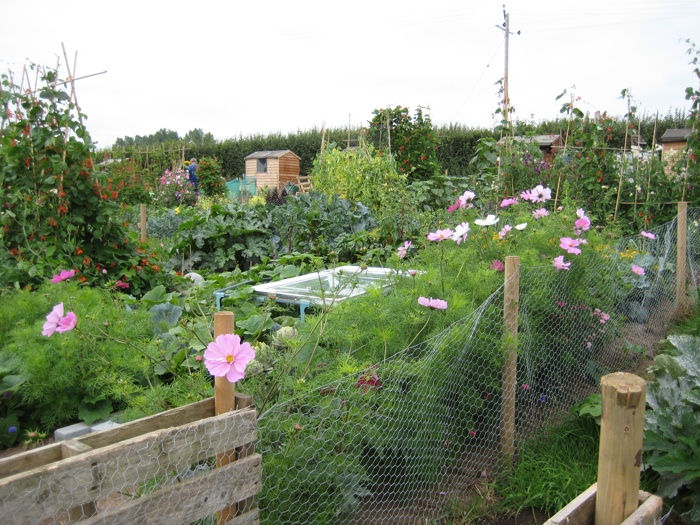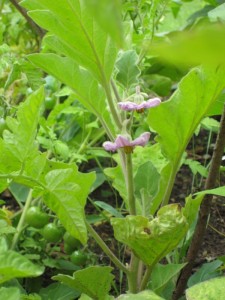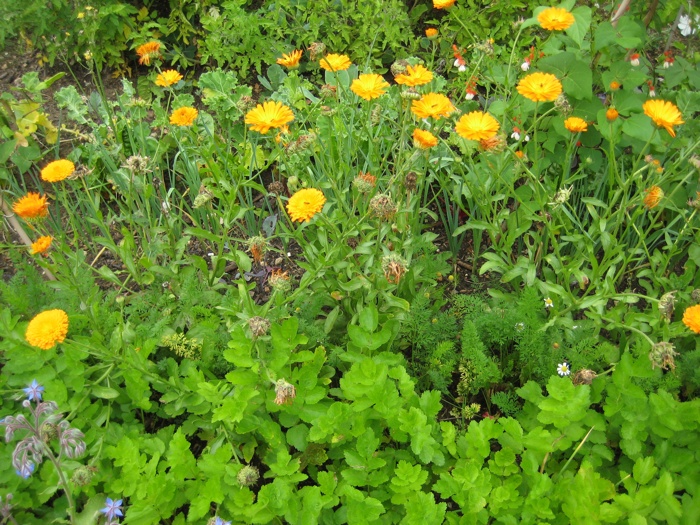12 August 2010 – Two weeks had passed since the Ella Montt had visited the Allotment Plot. The Plot had not become chaotic, but was growing steadily. Ella Montt had visited a new Allotment site in rural South West England. The Allotment site had started cultivation in March this year after a village had decided to search out a field that could be converted into Allotment growing space. A village can have the advantage of negotiating new Allotment growing space from a landowner, if the village is in closer proximity to land as opposed to a city or town, however the negotiation always depends on the location of the village and the situation of the land, what it is already used for and who “owns” the land.

Back at Ella Montt’s growing Plot at MERL, there was more research to be done. Ella Montt kneels on the ground and carefully digs the earth to uncover any remains of the buried Sweet Potato. The disturbance of the earth reveals a hardened lump that is barely distinguishable as the original tuber, it would seem that it was still composting, but producing very fine shoots or roots in the process. However the roots could be in themselves part of decomposition, a breakdown of nutrients absorbing themselves into the soil. The remains of the Sweet Potato are gently recovered and will not be disturbed again, but the area will be monitored for any signs of shoot growth. The Sweet Potato experiment will resume at the start of the growing season in 2011 as mentioned previously.
The day’s weather is overcast; warm, but not overly so and somewhat humid. Ella Montt’s attention turns to other details of the Plot through an assessment of vegetation growth activity. Both Kales, Pentland Brig and Red Russian Curled, are not appreciating this summers weather conditions, harvesting of both will commence without further delay. The Aubergine Black Beauty has two flowers. One small Squash has formed on a plant, but all of the Squash plants are being slow to grow and not producing the needed female flowers in order to form Squashes. Squashes are a good source of food for the winter, because they can be stored. The Sweet Corn plants are starting to flower, but they are not tall enough to produce good ears. More Cosmos plants are growing.


Harvesting commenced: Lettuce Marvel of the Four Seasons = 4oz = 100grams; Rainbow Chard = 4.5oz = 115grams; Kale Pentland Brig = 7.5oz = 200grams; Kale Red Russian Curled = 4oz = 110grams; 1 Runner Bean; 1 green Pepper = 1oz = 20grams; 1 Courgette Patriot F1 1oz = 20grams; 1 Courgette Soleil F1 = 7oz = 200grams; Dwarf Beans Royalty = 1oz = 20grams; 7 Tomatoes 2.5oz = 65grams; French Climbing Beans Blauhide = 6oz = 175grams and Blue Lake = 5oz = 145grams.
In an effort to work towards achieving vegetable growing self-sufficiency through the Plot some more seeds were planted close to Sweet Corn. Seeds planted were Oriental Saladini, Borecole Nero Di Toscana, and more Carrot Amsterdam Forcing.
Ella Montt sits next to Allotment Plot reading The Living Soil by author Eve Balfour. This book, first published in 1943 by Faber and Faber, was an informative research text that assisted in the initial formation of the Soil Association. An original copy of Lady Eve’s book sits across the garden in MERL’s reading library archive. Chapter III HUMUS is being read again today. Whilst reading, a woman and her child is silently observed removing seed heads from the prolific Pot Marigolds, she places the collected seeds in a paper bag. Earlier the woman had been seen to be amused by the Heavy Metal CD pigeon deterrents.
